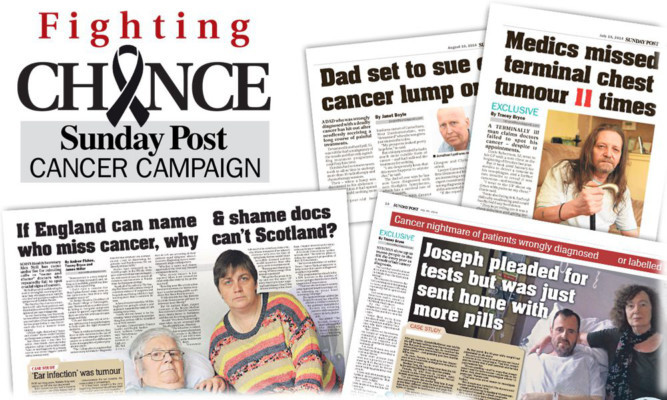
Death rate from some cancers are higher than many African countries
Scottish women are more likely to die of major cancers than their foreign counterparts. New studies reveal the death rates from breast and lung cancer are higher among females in this country than those in many other parts of the world.
The figures suggest Scotland is falling short in preventing, diagnosing and treating cancer. And they underline the importance of early cancer diagnosis, the key aim of our Fighting Chance cancer campaign.
More than 4,500 women are diagnosed with breast cancer in Scotland each year. It is the most commonly diagnosed cancer in women and around 1,000 die from the disease every year.
Only one third of cases are picked up during routine mammogram screening the rest are diagnosed after finding a lump and going to their doctor.
A recent study shows breast cancer survival rates three years after diagnosis are as high as 94% in Sweden, 92% in Canada, 90% in Norway, 89% in Denmark and 87% in England. But the rate in Scotland is just 86%.
Another study reveals the number of women dying of lung cancer within populations of different countries. It shows the death rate from lung cancer among women aged 50-74 in Scotland is the highest in the world.
Scotland tops the list of more than 60 countries for this age group, with a higher death rate than countries in Africa, Asia and Latin America.
In Scotland 120 women per 100,000 die of the disease compared with 93 in the United States, 80 for the rest of the UK, 40 in France and just 15 in Mexico. The grim situation is likely to improve in time, however, as Scotland’s ranking for younger women is far better.
But retired GP, Dr Jean Turner, chief executive of the Scotland Patients Association, said international survival rates should be scrutinised to see if other countries were doing things differently.
However, she added GPs needed to be put under less pressure in order to take their time to find out what might be wrong with a patient.
“If there are better survival rates in other countries we need to look into the reasons. Are they getting diagnosed and into the system faster, or receiving different treatment?
“Early diagnosis is key as we have to know what we’re dealing with before we can tackle it. Not every lump is cancer but we can’t ignore the possibility, so doctors should always refer patients and that is true for a lot of cancers.
“Doctors need more time with patients to listen and take a full history which is not in line with the way the Health Service has been running for years.
“You don’t just glance at them, and know what’s wrong, it takes time. It’s like being a good detective you never assume. We don’t have enough staff on the frontline to make decisions about who to refer.”
A spokesman for the Scottish Government said: “While cancer mortality rates have decreased by 11% over the past 10 years we are determined to do more.
“We’ve been making good progress in treatment during the last two decades screening for breast, bowel and cervical cancers has been introduced and advances in treatments have been implemented along with investment in staff and equipment.
“Our Detect Cancer Early programme is making huge strides in detecting more cancers at the earliest possible stage.”

Enjoy the convenience of having The Sunday Post delivered as a digital ePaper straight to your smartphone, tablet or computer.
Subscribe for only £5.49 a month and enjoy all the benefits of the printed paper as a digital replica.
Subscribe